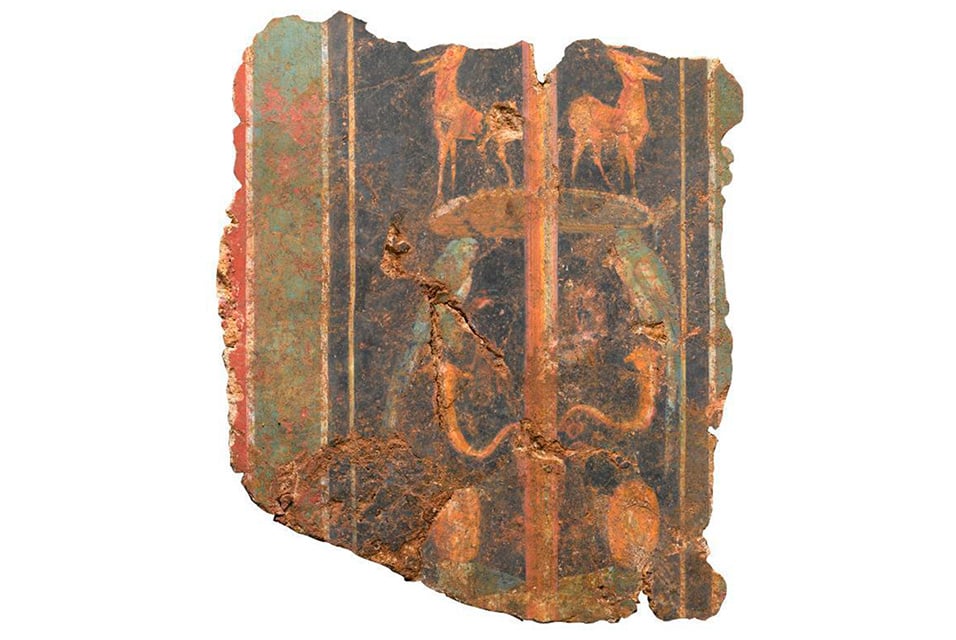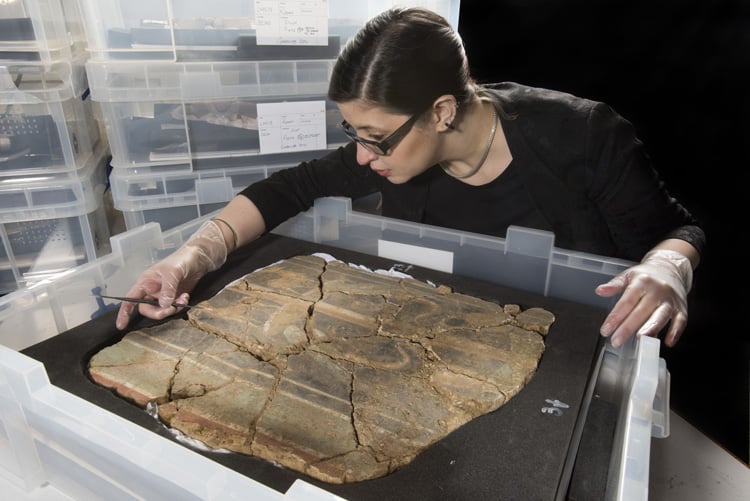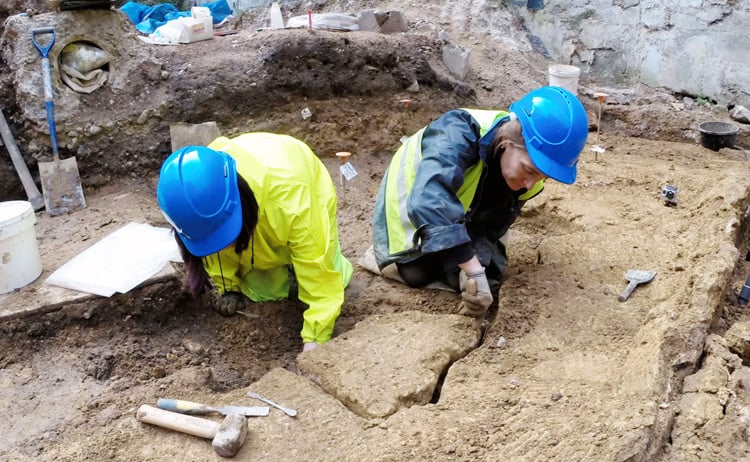Art World
Rare Roman Wall Painting Discovered on London Construction Site
This is its first time being seen in "nearly 2,000 years."

This is its first time being seen in "nearly 2,000 years."

Sarah Cascone

How did a painted wall come to be preserved underground for two millennia? London’s history as part of the ancient Roman Empire has come to light in the form of an ornate Roman wall painting unearthed in by the Museum of London Archaeology (MOLA). The excavation of a completely collapsed wall painting is exceptionally rare. It was discovered face down, nearly 20 feet below street level, as MOLA conducted fieldwork in advance of a new construction project.
The wall was reportedly knocked over by the ancient Romans in 100 AD to make way for the second Forum Basilica, an important civic building and the largest ever built by the Romans north of the Alps.

MOLA archaeological conservator Luisa Duarte examines a section of decorated Roman wall the 1st century AD discovered in London.
Photo: © MOLA.
The multicolored fresco features an intricate pattern of snaking vines, trees, deer, and birds.
Other major archaeological finds uncovered during construction include an ancient mosaic that turned up when Israel was building a museum for, you guessed it, another mosaic, and the ruins of what is thought to be Mary Magadelene’s hometown at the site of a planned Galilean hotel.

Conservators from MOLA remove a section of decorated Roman wall from the 1st century AD from an archaeological site in London.
Photo: © MOLA.
In London, archaeologists painstakingly removed the three-foot by eight-foot wall in 16 sections, being careful to bring up the soil underneath the mural along with the ancient artwork. The dirt was then quickly and carefully removed by conservators at the MOLA lab, before the soil could dry out.
“This was a really challenging but rewarding conservation project,” said MOLA archaeological conservator Liz Goodman in a statement. We were up against the clock working on this huge and fragile fresco, but it was a joy to uncover the decorative plaster that hadn’t been seen for nearly 2,000 years.”